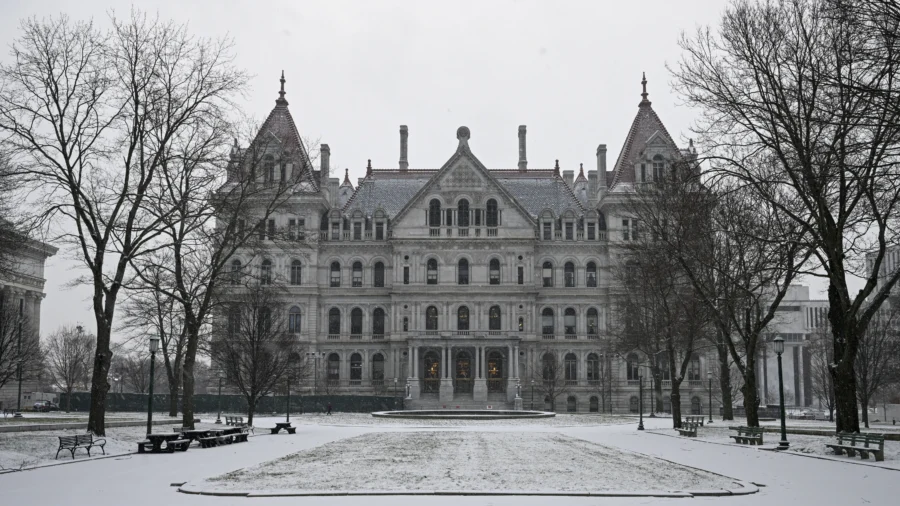New York’s bipartisan redistricting commission on Feb. 15 has approved a new congressional map proposal. The new map incorporates some minor changes to three competitive districts, although includes no major alterations to the rest of the state’s lines.
The proposal is now heading to the Democrat-dominated Legislature, which can either approve or reject it and draw its own lines. Currently, no date has been confirmed as to when lawmakers will decide on the proposed plan.
New York’s congressional redistricting process has been closely watched this year due to the extensive influence suburban races in the state could exert on which political party will control the House after the November elections.
The panel’s new map plan would likely be advantageous for Democrats, as it would facilitate two seats for the party instead of one Republican. However, most congressional districts would remain unaffected.
While it may help Democrats to bypass certain legal challenges encountered, such as the attempts to dramatically redraw the districts in 2022, it is unlikely to result in significant gains for the party.
However, a notable change could occur in the GOP-run central New York district, held by Congressman Brandon Williams, which lies over Syracuse. The commission would alter current district lines to include the left-leaning cities of Auburn and Cortland.
Other significant changes would likely occur in the neighboring Hudson Valley districts, which are held by Republican Congressman Marc Molinaro and Democratic Congressman Pat Ryan.
The changes, however, appear to favor both incumbents, as it would extend Ryan’s district northwards to include Woodstock and other Democrat-leaning areas, whereas Molinaro’s district would expand to include Republican-leaning sections of the region.
According to New York Law School professor Jeffrey Wice, who focuses on redistricting, the changes appear to benefit Republicans on a wider scale.
“In a state where the Democrats control both the Legislature and the governor’s office, I think the Republicans got a pretty good deal out of it,” he said.
Previous attempts by the state’s Independent Redistricting Commission to draw the districts used in 2022 did not yield any results, as negotiations on the process hit a dead end, and it was subsequently passed to state lawmakers.
Democrats then attempted to draft their own version of the map, which would have seen waning Republican influence across multiple districts and diluted statewide GOP voting power. This effort was hampered by a lawsuit, which eventually saw the map being scrapped, in addition to causing a delay in the congressional primaries.
An outside expert was then tasked by the state’s highest court to redraw a map for 2022, which resulted in Republican gains in the New York City suburbs and a narrow House majority win.
This was subsequently contested by Democrats, who initiated a lawsuit to discard the 2022 map, which ended in a ruling by the state’s high court in December that gave the commission another opportunity to redraw the lines.
The currently agreed proposal is similar to the one drawn by the court’s expert in 2022. It was approved by a 9-1 vote during a brief hearing in Albany, with one of its leaders saying they used the existing map as a guide for the new proposal.
According to the proposal, Congressional boundaries will remain largely unchanged on Long Island, where races are expected to be hotly contested. It will include the district previously held by recently expelled Congressman George Santos, who was replaced this week by Democrat Tom Suozzi in a special election. New York City’s lines will remain largely unaffected, per the proposal.
“It was important for us not to enter into the process of confusing people out there over where they were going to vote,” said Redistricting Commission Vice Chair Charles Nesbitt.
Assembly leaders from both parties said they are reviewing the map in its current form but did not weigh in further on the current assessment.
First created in 2014 under a constitutional amendment approved by voters, the Independent Redistricting Commission is made up of an equal number of Republicans and Democrats.


